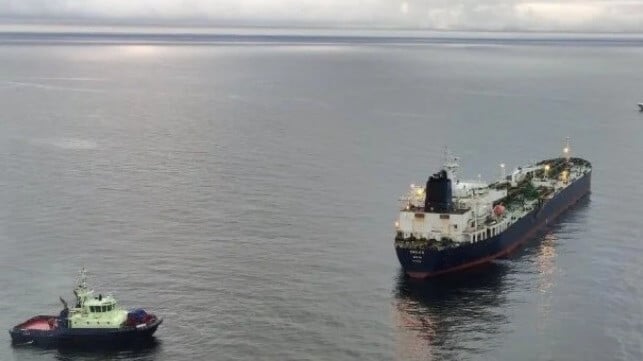U.S. Sanctions More Than 180 Russian "Shadow Fleet" Tankers

The U.S. Treasury has announced new action against the Russian "shadow fleet" with sanctions on an unprecedented 183 tankers, along with two Russian insurers specializing in questionable P&I cover.
"The United States is taking sweeping action against Russia’s key source of revenue for funding its brutal and illegal war against Ukraine," said Secretary of the Treasury Janet L. Yellen in a statement. "This action builds on, and strengthens, our focus since the beginning of the war on disrupting the Kremlin’s energy revenues."
The named vessels include a large share of the Sovcomflot fleet, along with the holdings of Fornax and Stream, two UAE-based shipmanagement entities that support Sovcomflot. The remainder of the listings consist of single-vessel holding companies with opaque ownership, typical of the shadow fleet. About 150 vessels on the list trade overseas, and TankerTrackers.com estimates that they carry about one-third of Russia's current oil export volume.
The Treasury also sanctioned and Ingosstrakh Insurance and Alfastrakhovanie Group, which have provided non-G7 insurance cover of unknown quality to "shadow fleet" tankers. Also named are Gazprom, Russia's giant state gas company, and Surgutneftegas, a privately-held Russian oil firm. A dozen Russian energy officials are included in the package, including several CEOs, along with a large network of overseas Russian oil traders and 30 Russian oilfield service providers.
A history of circumvention
The shadow fleet was created to exploit a broad loophole in the G7 "price cap" system, the carefully tailored sanctions mechanism that Ukraine's allies created in 2022. The "price cap" allows tanker owners who carry Russian oil to continue to access the European insurance market - which provides 90% of all P&I cover - so long as the oil is priced under $60 per barrel.
Initially, light enforcement of the price cap allowed certain Western tankers to continue carrying Russian oil at market prices. After media investigations of widespread violations of the price cap, U.S. and UK enforcement began to pick up in mid-2023.
As enforcement made it more difficult for Russian oil producers to access G7 tankers, a growing share of the Russian oil export market began to operate through a large loophole - the "shadow fleet," a group of aging, anonymously-owned and questionably-insured vessels, purchased secondhand and flagged with low-enforcement registries. Lacking G7 insurance or any other ties to G7 jurisdictions, these tankers operate outside of the reach of the G7 price cap.
Today, Russia's shadow fleet is hundreds strong and carries more than 80 percent of all Russian oil. Because of the fleet's age, its serious quality issues and its lack of credible insurance, Western regulators view it as an increasing safety and security risk.
The risks of Russia circumventing the G7 price cap were understood and identified by policy analysts as early as July 2022, months before the cap took effect. The vessel sanctions announced Thursday take a step towards closing the "shadow fleet" loophole and making it harder than ever for Russian producers to ship oil, at any price level.
